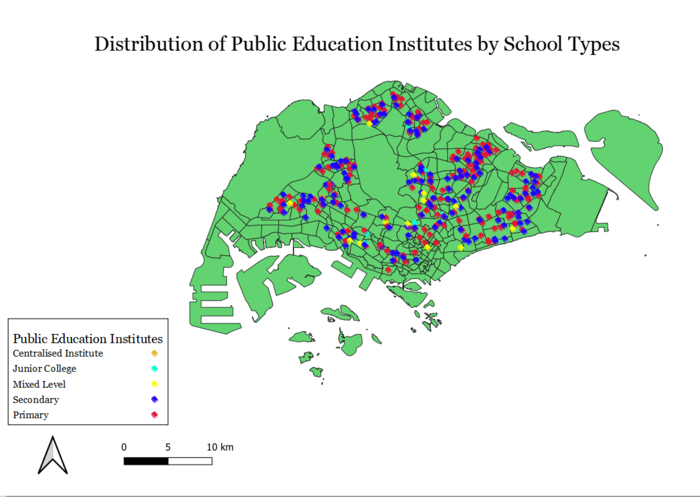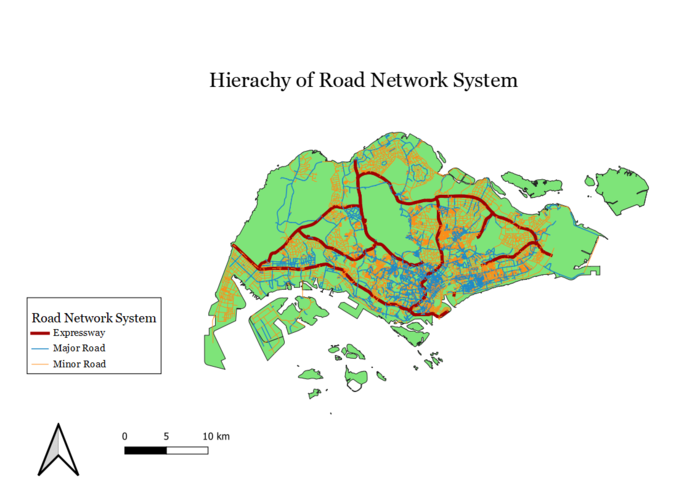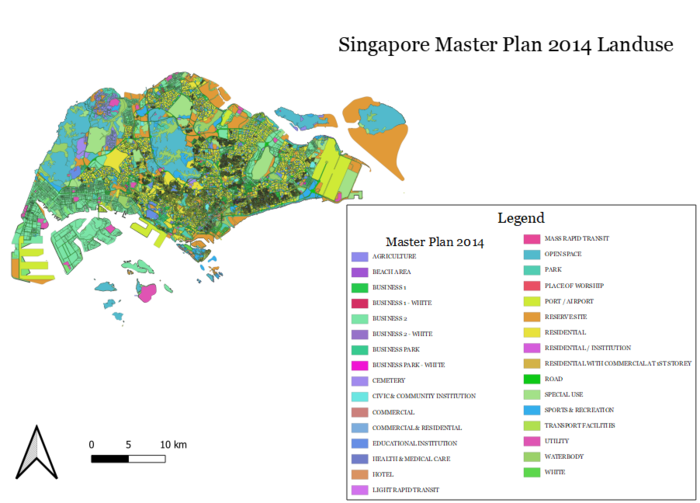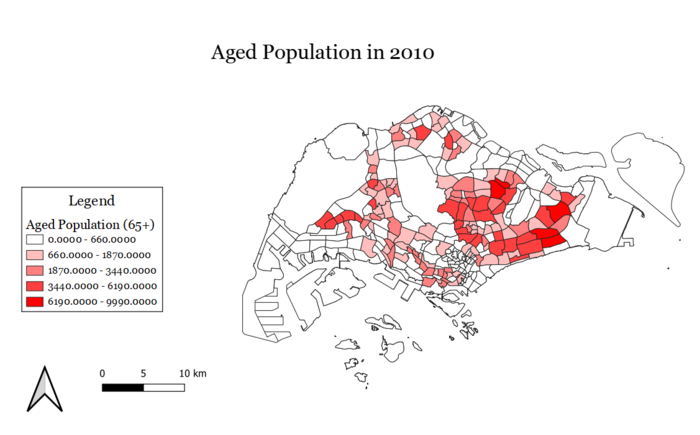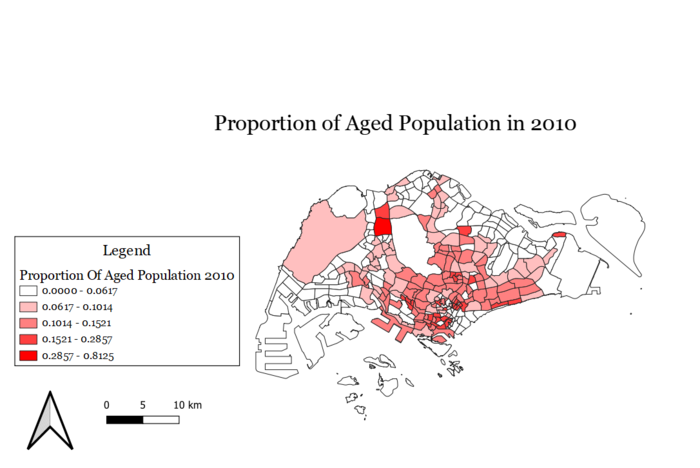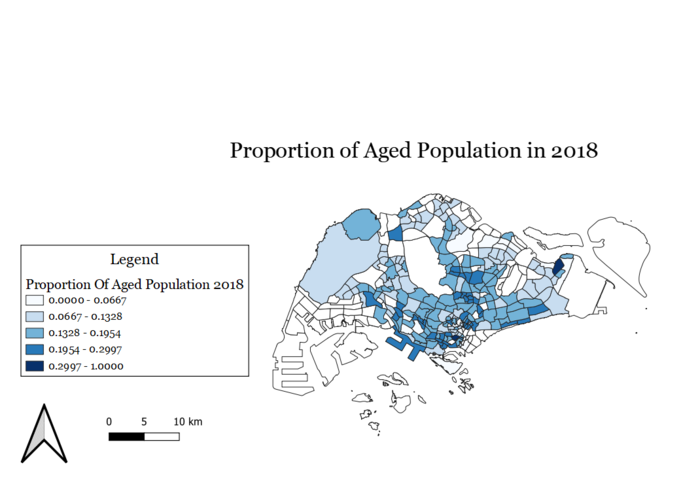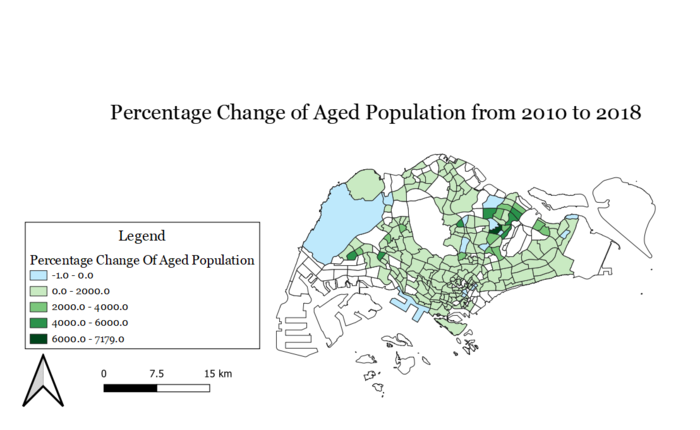SMT201 AY2018-19T1 EX1 Lim Jia Yang James
Part 1: Thematic Mapping
Distribution of Public Education Institutes by School Types
I differentiated the different public education institutes namely "Primary", "Secondary", "Mixed Level", "Junior College" and "Centralised Institute" by using Categorized for variable "main_level". Although the original CSV file contains 344 records, my copy only contains 342 records, as I believe that 2 records were lost while geocoding.
Source: General information of schools https://www.data.gov.sg/dataset/school-directory-and-information
Master Plan 2014 Planning Area Boundary (No Sea) https://www.data.gov.sg/dataset/master-plan-2014-planning-area-boundary-no-sea
Hierarchy of Road Network System
All of Singapore's roads are shown in the map above, broadly categorized to Expressways, Major Roads and Minor Roads. To mimic real world conditions, I made lines representing Expressways thicker and I also chose a darker color. Likewise, I chose a darker color and thicker width lines for the Major Roads as compared to the Minor Roads.
Source: Road Section Line https://www.mytransport.sg/content/dam/datamall/datasets/Geospatial/RoadSectionLine.zip
Master Plan 2014 Planning Area Boundary (No Sea) https://www.data.gov.sg/dataset/master-plan-2014-planning-area-boundary-no-sea
Singapore Master Plan 2014 Landuse
As there are many categories in this layer, the border lines of each segment caused the overall map to look extremely black and hence unable to provide useful information at one glance. I overcame this by reducing the width of the border lines to 0.05mm, this softened most the dark regions and hence the color of the segments are able to come through.
Source: Master Plan 2014 Land Use https://www.data.gov.sg/dataset/master-plan-2014-land-use
Part 2: Choropleth Mapping
Aged Population in 2010
After downloading the csv file of Singapore's age breakdown, I joined it with the subzone layer. As the subzone layer I used had more subzones than the csv file containing the ages, there were subzones where there were null values for all ages. I replaced these missing values with 0, so as to have a complete looking map as an end product. I then used the Field Calculator to sum up all the age bins from 65 and above to a column 65+ and used that column for Categorizing using Natural Breaks. From this map, I can infer that there were significantly more aged population towards the east side of Singapore in 2010.
Source:
Singapore Residents by Planning Area/Subzone, Age Group and Sex, June 2000 - 2018 https://www.singstat.gov.sg/find-data/search-by-theme/population/geographic-distribution/latest-data
Master Plan 2014 Subzone Boundary (No Sea) https://www.data.gov.sg/dataset/master-plan-2014-subzone-boundary-no-sea
Aged Population in 2018
Similar to that of 2010, however, looking at the legend we can see that there is a general increase in the aged population.
Source:
Singapore Residents by Planning Area/Subzone, Age Group and Sex, June 2000 - 2018 https://www.singstat.gov.sg/find-data/search-by-theme/population/geographic-distribution/latest-data
Master Plan 2014 Subzone Boundary (No Sea) https://www.data.gov.sg/dataset/master-plan-2014-subzone-boundary-no-sea
Proportion of Aged Population in 2010
To calculate the proportion of aged population, I used the column I calculated previously calculated (Age65+) and I divided it with the respective grand totals. From the map, I can infer that the southern parts of Singapore have a generally higher proportion of aged population.
Proportion of Aged Population in 2018
Similar to that of 2010, however, looking at the legend we can see that there is a general increase in the aged population.
Percentage Change of Aged Population from 2010 to 2018
To calculate percentage change of aged population between 2010 and 2018, I used the formula [(2018'Age65+)-(2010'Age65+)] / 2010'Age65+. As there were some subzones populated with elderly in 2018 but not in 2010, I changed the data for Age65+ from 0 to 1 for such subzones in 2010. This is to prevent getting a Math error in the calculations which will arise from dividing with 0 as the denominator.
To my surprise, there were subzones where the proportion of aged population actually decreased from 2010 to 2018. Unlike the previous 2 maps where I used Natural Breaks to differentiate the subzones, I used Pretty Breaks this time as I wanted the subzones with negative percentage change (which is a minority) to be in a class of themselves. I changed the colors of such subzones to blue to further standout from the green color scheme of the other subzones.
